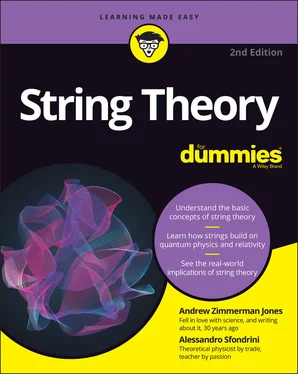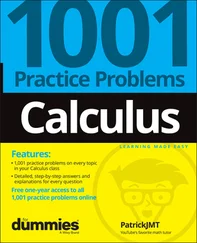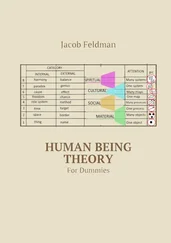It’s also worth noting that mathematics as a whole doesn’t really follow this idea of falsifiability. Instead, it invents some more or less reasonable starting points (axioms) and, through a series of deductions, provides theorems that establish precise relations between mathematical objects. Although math itself is not falsifiable, it cannot be denied that it is incredibly useful to understanding nature, and we’d be hard-pressed to do without it when building a house or flying a plane.
Popper’s claim is sometimes controversial, especially when it’s being used by one scientist (or philosopher) to discredit an entire field of science. Many still believe that reductionism and inductive reasoning can lead to the creation of meaningful theoretical frameworks that represent reality as it is, even if there’s no claim that’s expressly falsifiable. The central element of this belief is the idea of confirmation — direct positive evidence for a theory, rather than just a lack of negative evidence against it.
String theorist Leonard Susskind and physicist Lee Smolin amicably clashed over exactly this point online in 2004 (you can view the debate at www.edge.org/3rd_culture/smolin_susskind04/smolin_susskind.html ). To support the idea of confirmation, Susskind lists several theories that have been denounced as unfalsifiable: behaviorism in psychology along with quark models and inflationary theory in physics. Scientists initially believed that certain traits in these areas couldn’t be examined, though methods were later developed that allowed them to be tested.
 There’s a difference between being unable to falsify a theory in practice and being unable to falsify it in principle.
There’s a difference between being unable to falsify a theory in practice and being unable to falsify it in principle.
It may seem as if the debate over confirmation and falsifiability is academic. That’s probably true, but some critics of string theory frame the debate around this theory as a battle over the very meaning of physics. Many string theory critics believe that it’s inherently unfalsifiable, while some string theorists believe a mechanism to test (and falsify) the prediction of string theory may someday be found.
The foundation of theory is mathematics
Galileo famously wrote that the universe is a book, and the language in which it is written is mathematics. Since his time, we have developed more and more powerful mathematical models that represent the underlying physical laws that nature follows. These mathematical models are the actual theories of physics that physicists can then relate to meaningful events in the real world through experiment and other means.
Science requires both experiment and theory to build explanations of what happens in the world. To paraphrase Einstein, science without theory is lame, while science without experiment is blind.
 If physics is built on a foundation of experimental observation, then theoretical physics is the blueprint that explains how those observations fit together. The insights of theory have to move beyond the details of specific observations and connect them in new ways. Ideally, these connections lead to other predictions that are testable by experiment. String theory has not yet made this significant leap from theory to experiment.
If physics is built on a foundation of experimental observation, then theoretical physics is the blueprint that explains how those observations fit together. The insights of theory have to move beyond the details of specific observations and connect them in new ways. Ideally, these connections lead to other predictions that are testable by experiment. String theory has not yet made this significant leap from theory to experiment.
 A large part of the work in theoretical physics is developing mathematical models — frequently including simplifications that aren’t necessarily realistic — that can be used to predict the results of future experiments. When physicists “observe” a particle, they’re really looking at data that shows a specific trace of that particle’s existence. When they look into the heavens, they receive energy readings that fit certain parameters and explanations. To a physicist, these aren’t “just” numbers; they’re clues to understanding the universe.
A large part of the work in theoretical physics is developing mathematical models — frequently including simplifications that aren’t necessarily realistic — that can be used to predict the results of future experiments. When physicists “observe” a particle, they’re really looking at data that shows a specific trace of that particle’s existence. When they look into the heavens, they receive energy readings that fit certain parameters and explanations. To a physicist, these aren’t “just” numbers; they’re clues to understanding the universe.
High-energy physics (which includes string theory and the physics of fundamental particles) has an intense interplay between theoretical insights and experimental observations. Research papers in this area fall into one of four categories:
Experiment
Lattice (computer simulations)
Phenomenology
Theory
Phenomenology is the study of phenomena (no one ever said physicists were creative when it comes to naming conventions) and relating them within the framework of an existing theory. In other words, scientists focus on taking the existing theory and applying it to the existing facts or building models describing anticipated facts that may be discovered soon. Then they make predictions about the experimental observations that should be obtained. (Of course, phenomenology has a lot more to it, but this is the gist of what you need to know to understand it in relation to string theory.) It’s an intriguing discipline, and one that over the last decades has been focusing on supersymmetry and string theory. When we discuss how to possibly test string theory in Chapter 14, it’s largely the work of phenomenologists that tells scientists what they’re looking for.
Though scientific research can be conducted with these different methods, there is certainly overlap. Phenomenologists can work on pure theory and can also, of course, prepare a computer simulation. Also, in some ways, a computer simulation can be viewed as a process that’s both experimental and theoretical. But what all these approaches have in common is that the scientific results are expressed in the language of science: mathematics.
In science, one goal is to propose the fewest “entities” or rules needed to explain how something works. In many ways, the history of science is seen as a progression of simplifying the complex array of natural laws into fewer and fewer fundamental laws.
 Take Occam’s razor, which is a principle developed in the 14th century by Franciscan friar and logician William of Occam. His “law of parsimony” is basically translated (from Latin) as “Entities must not be multiplied beyond necessity.” (In other words, keep it simple.) Albert Einstein famously stated a similar rule as “Make everything as simple as possible, but not simpler.” Though not a scientific law itself, Occam’s razor tends to guide how scientists formulate their theories.
Take Occam’s razor, which is a principle developed in the 14th century by Franciscan friar and logician William of Occam. His “law of parsimony” is basically translated (from Latin) as “Entities must not be multiplied beyond necessity.” (In other words, keep it simple.) Albert Einstein famously stated a similar rule as “Make everything as simple as possible, but not simpler.” Though not a scientific law itself, Occam’s razor tends to guide how scientists formulate their theories.
In some ways, string theory seems to violate Occam’s razor. For example, in order to be related back to the real world, string theory requires the addition of a lot of odd components that scientists haven’t actually observed yet (extra dimensions, new particles, and other features mentioned in Chapters 10and 11). However, if these components are indeed necessary, then string theory is in accord with Occam’s razor.
The role of objectivity in science
Some people believe that science is purely objective. And, of course, science is objective in the sense that anyone can apply the principles of science in the same way and get the same empirical results in a specific experimental situation. (At least this is how it usually works in physics. Don’t get us started on psychology.) The idea that scientists are themselves inherently objective is a nice thought, but it’s about as true as the notion of pure objectivity in journalism. The debate over string theory demonstrates that the discussion isn’t always purely objective. At its core, the debate is over different opinions about how to view science.
Читать дальше

 There’s a difference between being unable to falsify a theory in practice and being unable to falsify it in principle.
There’s a difference between being unable to falsify a theory in practice and being unable to falsify it in principle. A large part of the work in theoretical physics is developing mathematical models — frequently including simplifications that aren’t necessarily realistic — that can be used to predict the results of future experiments. When physicists “observe” a particle, they’re really looking at data that shows a specific trace of that particle’s existence. When they look into the heavens, they receive energy readings that fit certain parameters and explanations. To a physicist, these aren’t “just” numbers; they’re clues to understanding the universe.
A large part of the work in theoretical physics is developing mathematical models — frequently including simplifications that aren’t necessarily realistic — that can be used to predict the results of future experiments. When physicists “observe” a particle, they’re really looking at data that shows a specific trace of that particle’s existence. When they look into the heavens, they receive energy readings that fit certain parameters and explanations. To a physicist, these aren’t “just” numbers; they’re clues to understanding the universe.










